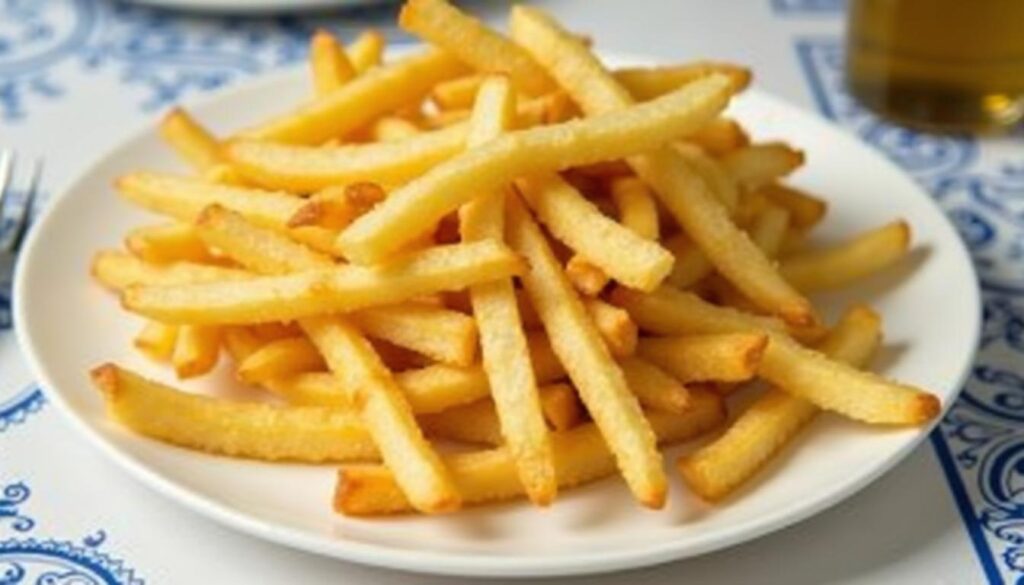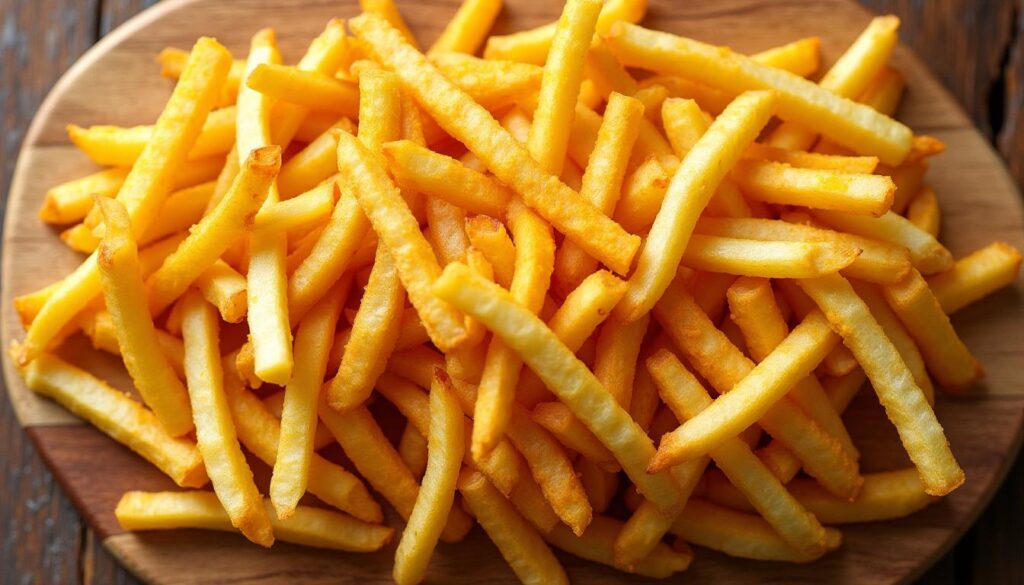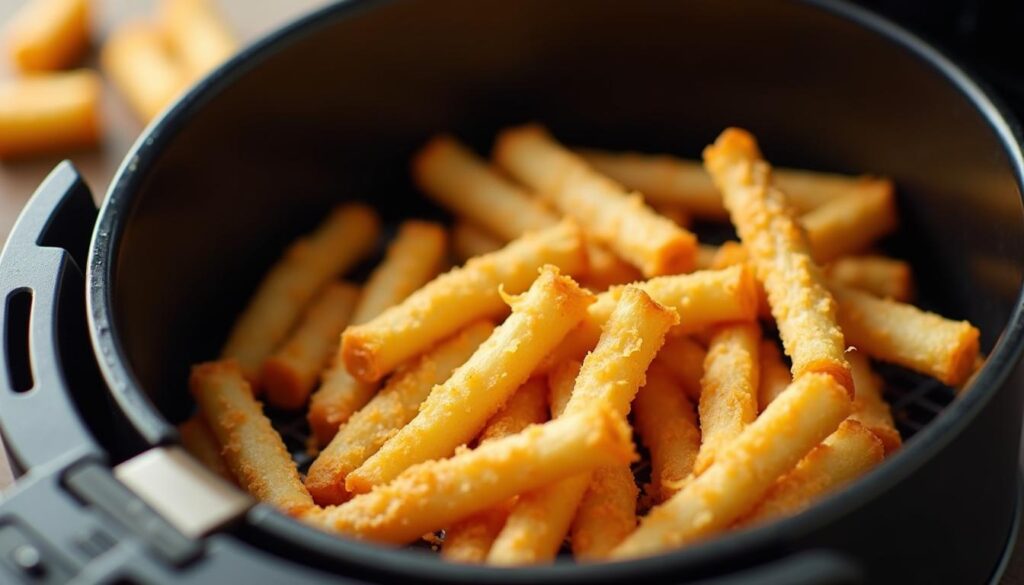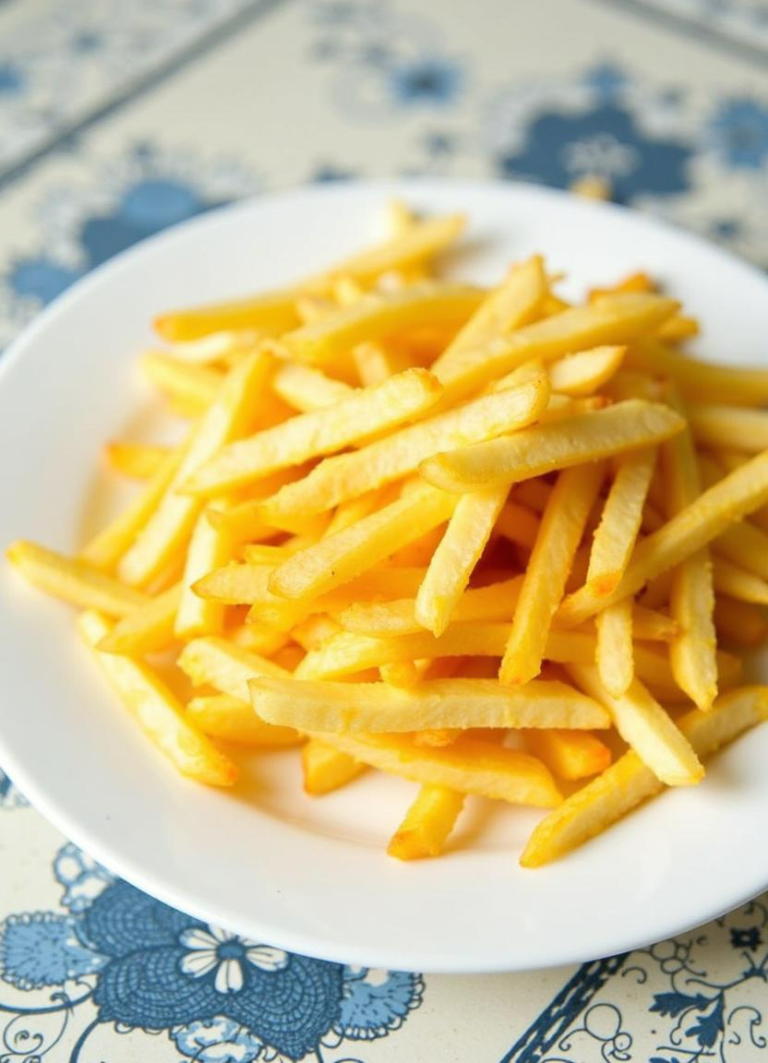Papas Fritas: Everything You Need to Know for Crispy Perfection

Are you curious about why papas fritas have become a beloved dish around the globe? Papas fritas, also known as fried potatoes, are treasured for their crispy texture and comforting taste. In many parts of the United States, people call them “French fries,” but their Spanish name—papas fritas—has gained popularity among food enthusiasts chasing authentic flavors and culinary traditions.
Whether you enjoy them with cheese, special sauces, or as a side to burgers and steaks, papas fritas can take many forms. This extensive guide will help you discover everything you need to know about picking the right potatoes, cooking methods, cultural variations, and more. By the end, you’ll feel confident making your own papas fritas at home and pairing them with a variety of delicious meals.
A Brief History
The exact origin of papas fritas remains a point of debate among food historians. While some people believe they first appeared in France during the 18th century, others argue that Belgium holds the key to their true birthplace. The Spanish name “papas fritas” refers simply to fried potatoes, and variations of this dish likely existed long before finding fame in Europe. Regardless of their precise start, papas fritas exploded in popularity worldwide and today stand as a staple in countless cuisines, including American, Latin American, and European culinary traditions.
What makes papas fritas so fascinating is how simple they are: potatoes cut into uniform shapes and then fried in hot oil until golden and crispy. One reason for their universal appeal is that potatoes are relatively easy to cultivate and store, making them an affordable ingredient. Over time, cultures have added personal touches like unique sauces, shapes, and cooking methods, all under the broad banner of papas fritas.
Why Papas Fritas Are So Popular
It’s hard to find a menu that doesn’t include some form of papas fritas. They have evolved from a humble side dish to a modern favorite because:
- Simplicity: Potatoes, oil, and salt form the chief foundation. Adding spices and dips can spice things up without complicated steps.
- Comfort Factor: The crisp exterior paired with a soft interior creates a comforting bite that appeals to both children and adults.
- Versatility: You can serve papas fritas with burgers, chicken wings, steak, fish, soups, or just about any entrée.
- Availability: Potatoes are easy to find year-round, making papas fritas an easy dish to prepare no matter the season.
- Endless Variations: Beyond the classic fried version, there are oven-baked papas fritas, air-fried papas fritas, or even curly fries dusted in special seasoning blends.
Many restaurants have put their own spin on papas fritas, offering everything from waffle-shaped fries to sweet potato fries. In some cases, chefs even top them with artisanal sauces or gourmet cheeses, showing just how classically adaptable papas fritas can be.

Types of Cuban French Fries and Cuts
One reason papas fritas stay exciting is that there are many cuts and shapes, each delivering a slightly different taste and texture:
- Classic Straight-Cut
These are the wholesome, rectangular sticks you see in most diners and fast-food restaurants. Natural and straightforward, classic straight-cut Cuban French Fries let the potato’s flavor shine. - Shoestring
Shoestring papas fritas look like thin sticks. Their slender shape offers more surface area, meaning an extra-crispy bite. However, they also tend to cook faster, so keep an eye on them. - Curly Fries
Made using a spiral slicer, curly papas fritas often come coated in a spicy or savory seasoning. They’re fun to eat and popular in many chain restaurants. - Waffle Fries
These are more like potato “grids” than fries, increasing their surface area and making them extra crunchy. Waffle-shaped Cuban French Fries hold sauces well, making them a topping-friendly favorite. - Steak Fries
Thick-cut logs that are hearty and tend to have a fluffier interior. These are perfect if you love a soft, potato texture inside while still craving a crisp exterior. - Crinkle-Cut
Their ridged edges add texture, resulting in an appealingly rippled shape. Some people like crinkle-cut papas fritas for dipping because the ridges hold sauce better.
With each cut, the basic principle remains the same: transform potatoes into a tasty, fried delight. You can try out different cuts at home to discover your favorite style of papas fritas.
Choosing the Right Potato
To enjoy the best possible papas fritas, you need to pick the right potato. Not all potatoes are created equal, and different varieties yield different results. Here are a few pointers:
- High-Starch Potatoes (e.g., Russet Potatoes)
These have a fluffy interior and crisp up nicely when fried. Russets are the most common choice for papas fritas in the U.S. - All-Purpose Potatoes (e.g., Yukon Gold)
They have a moderate starch level and can work well for frying, though they may not achieve the same crispiness as Russets. However, they have a deep, buttery flavor many people love. - Waxy Potatoes (e.g., Red Potatoes)
They remain firm when cooked and often make good roasted potatoes. But for classic Cuban French Fries, they might not give the fluffy interior you desire.
Remember that correct storage is also crucial. Keep your potatoes in a cool, dark place to prevent them from sprouting or turning green. Freshness matters—older potatoes tend to have more sugar, leading to darker, sometimes bittersweet papas fritas.
The Key to Perfect Papas Fritas at Home
Cooking papas fritas successfully at home may seem tricky, but it’s actually quite approachable once you understand a few basics:
- Uniform Cutting
Aim for consistent thickness. This helps each piece cook at the same rate, so you won’t end up with some underdone and others over-crisped. - Soaking
Soaking cut potatoes in water for anywhere from 30 minutes to a few hours can remove excess starch, leading to a crisper exterior after frying. - Drying Thoroughly
Patting your potatoes dry with paper towels or a clean kitchen towel stops them from steaming in hot oil. A thorough dry is your best friend for crispy papas fritas. - Oil Temperature
Let your oil reach around 325°F for a first “blanch” fry, then raise it to about 375°F for a subsequent crisping stage. If you only deep-fry once, pick a temperature around 350–365°F, but watch carefully to ensure the papas fritas cook properly throughout. - Avoid Overcrowding
Cook in smaller batches. Overcrowding the fryer or pan can reduce the oil’s temperature, leading to soggy papas fritas. - Seasoning While Hot
Right after removing them from the oil, sprinkle the papas fritas with salt or any seasoning while the surface is still hot and slightly damp. This allows the flavors to stick.
By following these key steps, you can get closer to restaurant-quality papas fritas in the comfort of your kitchen.

Step-by-Step Cooking Methods
Papas fritas aren’t limited to just one frying process. Let’s explore some popular cooking methods to suit diverse tastes:
1. Classic Deep-Frying
- Cut and Soak: Slice your potatoes into the desired shape and soak them in cold water for 30–60 minutes.
- Preheat Oil: Heat oil (canola, peanut, or vegetable) in a deep pot or fryer. Aim for 325°F for the first batch.
- First Fry: Fry your potatoes for about 3–4 minutes, just until they look pale and softened. Remove and drain them on paper towels.
- Raise Temperature: Increase the oil to around 375°F.
- Second Fry: Return the potatoes to the fryer. Cook until they become golden and crispy, about 2–3 more minutes.
- Season and Serve: While still hot, sprinkle salt or other seasonings. Enjoy immediately.
2. Pan-Frying
Pan-frying is suitable for small batches of papas fritas if you don’t have a deep fryer:
- Heat a Skillet: Use a wide pan with a few tablespoons of oil.
- Single Layer: Place the potatoes in a single layer, avoiding overlap. Turn them regularly to brown all sides evenly.
- Lower Heat: If they brown too quickly, reduce the heat.
- Season: Add salt and pepper once they are cooked evenly.
3. Oven-Baked
For a lighter version, try baking your papas fritas:
- Preheat Oven: Set your oven to 425°F.
- Coat in Oil: Toss the cut potatoes in a thin layer of oil, salt, and any preferred spices.
- Lay Flat: Spread the potatoes on a baking sheet without overlapping.
- Bake and Flip: Bake for 15–20 minutes, flip, then bake another 10–15 minutes until crisp.
- Serve Hot: Enjoy these papas fritas with your favorite dips.
4. Air Fryer
An air fryer can replicate the crispiness of deep-fried papas fritas with less oil:
- Lightly Oil: Coat the potatoes with a small drizzle of oil.
- Preheat Air Fryer: Follow your machine’s instructions, typically around 375°F.
- Cook in Batches: Don’t overcrowd the basket. Cook for 15–20 minutes until golden, shaking or flipping halfway.
- Season: Immediately sprinkle with salt or any spice mix.
Whichever method you choose, proper timing and attention to detail are vital for mouthwatering papas fritas.
Popular Seasonings and Toppings
When you hear “papas fritas,” you might think of just salt and ketchup. Yet, there’s a world of creative possibilities:
- Classic Salt: A sprinkle of sea salt or kosher salt brings out the potato’s honest flavor.
- Garlic and Herb: Combine minced garlic, parsley, rosemary, or thyme for a fragrant finish.
- Cheese: Plenty of melted cheddar or a dusting of Parmesan can transform your standard papas fritas into a hearty treat.
- Spicy Mix: A dash of chili powder, cayenne pepper, or paprika can offer a punchy kick for those who love heat.
- Truffle Oil Drizzle: A gourmet twist that adds earthy, aromatic notes.
- Loaded Fries: Top your papas fritas with sour cream, bacon bits, jalapeños, or diced tomatoes, turning them into a full meal.
Striking a balance between fresh flavors and the potato’s natural taste is essential. You can get experimental or stick to classic salt-and-pepper simplicity.
Healthy Twists on Papas Fritas
It’s no secret that deep-frying potatoes adds calories and fat, but that doesn’t mean you have to avoid papas fritas entirely. There are several healthier approaches:
- Baked or Air-Fried
Both methods cut down on oil. You still get a crispy texture without the extra grease. - Sweet Potatoes or Mixed Veggies
Try sweet potato “fries” or even carrot and parsnip fries. They add color and extra nutrients, changing the taste a bit but retaining that fry experience. - Low Sodium Seasonings
Explore herbal blends with rosemary, cilantro, or oregano in place of salt-heavy mixtures. - Portion Control
Enjoy papas fritas as an occasional treat, focusing on fresh produce and lean proteins to balance your meal.
If you’re interested in combining your papas fritas with a healthy side dish, consider reading about lighter ingredient options you might already have at home. For instance, you might enjoy a hearty soup that complements your crispy fries.Here’s a tip: If you want a comforting bowl of soup to match your papas fritas, check out Taco Soup Frios Recipe. This soup can go hand-in-hand with a plate of freshly made fries for a cozy lunch or dinner.
Pairing Papas Fritas with Other Dishes
One of the best things about papas fritas is how well they pair with a variety of main courses. Think of them as a universal side that can enhance your everyday meals or special feasts:
- Burgers: A classic American meal that screams comfort.
- Grilled Chicken: The crispness of papas fritas complements succulent, juicy chicken.
- Fish: Crispy fish fillets or fish sticks with papas fritas are hits in many US households.
- Sandwiches: From a turkey club to a hearty steak sandwich, papas fritas add a pleasant crunch factor.
- Stews and Soups: Ever dipped fries into a hot bowl of chili or stew? It might surprise you how well it works. If you’re curious about soup ideas, consider checking out the fundamentals of soup-making in Soup Bones 101 to expand your cooking repertoire.
The pairing options are endless because the potato itself has a mild, comforting taste, acting as a blank canvas for stronger flavors.
Cultural Variations From Around the World
Although papas fritas are associated closely with American diners and fast-food chains, many cultures have their own spin on fried potatoes:
- Belgian Frites: Often double-fried and served in a paper cone. Traditionally eaten with mayonnaise or special Belgian sauces.
- Patatas Bravas (Spain): Cubed potatoes fried in olive oil and topped with a tangy, spicy sauce. A popular tapas dish.
- Poutine (Canada): A hearty meal of fries topped with cheese curds and hot gravy.
- Masala Fries (India): Fried potatoes seasoned with a blend of chili, turmeric, and other spices that offer bold, vibrant notes.
- Loaded Fries (United States): Ranging from chili cheese fries to bacon ranch fries, these loaded versions are popular for sports events, potlucks, or just devouring at home.
Each region adapts papas fritas to local tastes, making them a versatile dish that never goes out of style.
Common Mistakes and How to Avoid Them
Even though papas fritas sound straightforward, common pitfalls can lead to disappointing results. Let’s go over a few and how to fix them:
- Oil Temperature Is Incorrect
If the oil is too hot, the fries might burn on the outside while remaining undercooked inside. If it’s too cold, they’ll soak up oil and become greasy. Use a thermometer to keep track. - Skipping the Soak
Not soaking your potatoes can lead to extra starch on the outside, making the fries less crisp. Even a quick 20-minute soak can make a big difference. - Crowding the Pan
Cooking too many fries at once drops the oil temperature and results in soggy papas fritas. Always fry or bake in small batches if needed. - Seasoning Too Late or Too Early
If you wait until the fries cool completely, your seasoning may not stick. But if you salt them too early (when they’re still in the oil), you risk cooling the oil or causing spattering issues. The sweet spot is right after removing them from the fryer and draining excess oil. - Poor Potato Choice
Using waxy potatoes or older potatoes with green spots can create off flavors and uneven textures.
Avoid these pitfalls, and you’ll be well on your way to enjoying delicious papas fritas every time.
Serving Ideas for Gatherings
Papas fritas aren’t just for family dinners—they shine at parties and social events too. Here are some creative serving suggestions:
- Build Your Own Fries Bar
Set out baskets of freshly fried potatoes and an array of sauces, dips, and toppings like cheese sauces, sour cream, jalapeños, diced tomatoes, bacon bits, or guacamole. Let guests customize their own creations. - Sliders and Fries Buffet
Offer small slider burgers alongside papas fritas for a crowd-pleasing meal. Everyone can assemble mini sandwiches and enjoy crisp fries without fuss. - Tapas Night
Combine papas fritas with other small, shareable plates like grilled shrimp, bite-sized sandwiches, or stuffed peppers. This encourages guests to mingle and sample different dishes. - Charcuterie Pairing
For a more upscale occasion, place papas fritas in small cups or paper cones next to cured meats, cheeses, and fruit. The salty crunch of papas fritas complements rich cheeses, adding a playful touch.
Don’t forget plenty of napkins, since papas fritas are best when eaten with hands!
Storage and Reheating Tips
Freshly made papas fritas always taste their best. However, if you’d like to save leftovers, consider these pointers:
- Cool First: Allow them to cool at room temperature before sealing them in an airtight container.
- Refrigeration: Store papas fritas in the fridge for up to three days. Keep in mind they may lose some crispness.
- Reheating:
- Oven: Spread on a baking sheet and heat at 400°F for a few minutes. This can revive some crunch.
- Air Fryer: Great for restoring crispiness in just 3–5 minutes.
- Microwave: Not recommended if you want them to remain crispy—microwaving can make them soggy.
If you’re someone who loves a comforting dessert after your savory fries, consider setting aside your leftover papas fritas first. Then look into sweet options like the Easy Vanilla Nut Granola Recipe, which can add a sweet ending to a hearty meal.
Frequently asked questions
What is the meaning of papas fritas?
In Spanish, papas fritas means “fried potatoes,” commonly referring to French fries or potato chips, depending on the region
What is the meaning of papas in Spanish?
In general, the term papas simply means “potatoes” in Spanish. It can appear in various contexts, such as “papas fritas” (fried potatoes) or “papas asadas” (baked potatoes) 2
How do Mexicans say fries?
In Mexico, people commonly use papas fritas to refer to fries. Sometimes you might also hear them called papas a la francesa, but papas fritas is the more widespread term.
Conclusion
Papas fritas, with their golden-brown color and irresistible crunch, have claimed their place as one of the world’s favorite comfort foods. From humble family kitchens to upscale restaurants, they bring joy wherever they are served. You can experiment with different potato types, cuts, cooking methods, and flavor combinations to make your perfect plate of papas fritas. Whether you prefer the classic deep-fry approach or a lighter oven-baked version, remember the essential steps: choose the right potatoes, soak them to remove excess starch, and manage your cooking temperatures.
The beauty of papas fritas is their adaptability—they can fit any meal or celebration, from a casual night in with a simple burger to a big party with custom toppings. They also blend seamlessly into hidden corners of cultural fusion, from Spanish tapas and Canadian poutine to American chili cheese fries. The best part? They’re fun to make and even more fun to eat.So the next time you’re craving that satisfying crunch, don’t hesitate to prepare homemade papas fritas.
With the tips in this guide, you’re well on your way to creating flavorful batches that will impress family and friends. Remember to keep your favorite dips and sauces at the ready—because once you serve up these crispy wonders, everyone will come running!
Print
Papas Fritas: Everything You Need to Know for Crispy Perfection
These perfectly crispy papas fritas make a delicious appetizer, side dish, or snack. Learn the best techniques for choosing potatoes, how to fry them to golden perfection, and tips for seasoning and serving. You’ll love how easy it is to create this crunchy, comforting dish right at home!
- Total Time: 25 minutes (excluding soaking)
- Yield: 4 servings
Ingredients
• 2–3 large potatoes (Russet or a high-starch variety)
• Vegetable or canola oil for frying (enough to submerge potatoes)
• Salt and pepper (to taste)
• Optional seasonings (paprika, garlic powder, or your favorite spice mix)(Optional Toppings)
• Grated cheese
• Chopped herbs (e.g., cilantro, parsley)
• Spicy sauces or dips
Instructions
- Prep the Potatoes
• Scrub and peel (optional) the potatoes.
• Cut them into uniform sticks, about ¼-inch thick.
• Submerge the potato sticks in cold water for at least 30 minutes to remove excess starch. - Dry the Potatoes
• Drain the potatoes and pat them completely dry with paper towels or a clean kitchen cloth.
• This step is crucial to avoid splattering oil and to help the fries crisp. - Preheat the Oil
• In a deep pot or tabletop fryer, heat the oil to about 325°F (160°C).
• Use a thermometer for accuracy if possible. - First Fry
• Fry the potato sticks in small batches for 3–4 minutes or until they look light and slightly softened.
• Remove the potatoes and place on paper towels to drain excess oil. - Increase the Heat
• Raise the oil temperature to about 375°F (190°C).
• Adjust your stovetop or fryer settings to maintain this temperature. - Second Fry for Crispiness
• Return the par-cooked potatoes to the oil in small batches.
• Fry for another 2–4 minutes or until they’re golden brown and crispy.
• Transfer to fresh paper towels to remove excess oil. - Season and Serve
• Immediately sprinkle salt and pepper over the hot fries.
• Add optional toppings or pair with sauce if desired.
• Serve at once for maximum crunch.
Notes
• Soaking Tip: Soaking the potatoes in cold water helps remove starch, leading to crispier edges.
• Oil Choice: A neutral, high smoke point oil (like vegetable or canola) is ideal for frying.
• Double Fry Method: This two-stage frying process guarantees a fluffy interior and crunchy exterior.
• Oven or Air Fryer Alternative: If you prefer less oil, you can bake or air-fry the potatoes. Brush lightly with oil, then cook at 400°F (200°C) until crisp.
• Storage: Best enjoyed fresh, but leftovers can be stored in an airtight container for up to 3 days in the fridge. Reheat in the oven or air fryer for crispness.
- Prep Time: 10 minutes (plus 30 minutes soaking)
- Cook Time: 15 minutes
- Category: Side Dish
- Method: Frying
- Cuisine: American
Nutrition
- Serving Size: 1 portion of fries
- Calories: ~200
- Sugar: ~1 g
- Sodium: ~300 mg
- Fat: ~10 g
- Saturated Fat: ~2 g
- Unsaturated Fat: ~8 g
- Trans Fat: 0 g
- Carbohydrates: ~24 g
- Fiber: ~2 g
- Protein: ~3 g
- Cholesterol: 0 mg
Keywords: papas fritas, crispy fries, golden fries







2 Comments